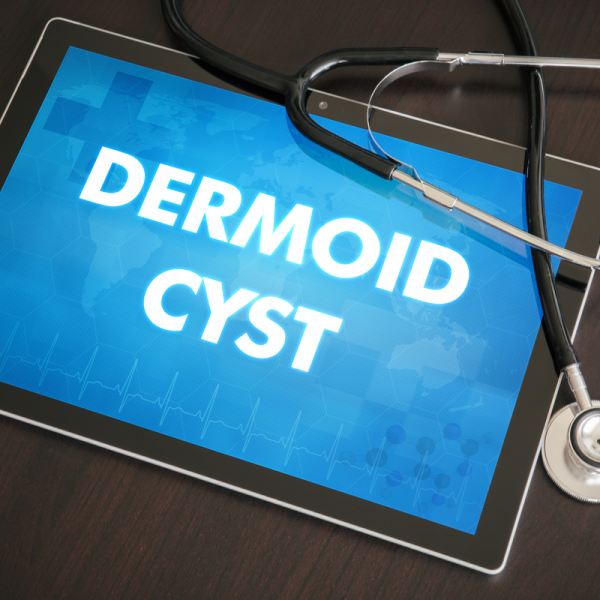
What is a dermoid cyst?
A dermoid cyst is also popularly called a "lost twin" because it can often contain hair, different types of tissue, skin and even teeth. Since these are pluripotent stem cells, i.e. cells that have developed in an embryonic stage, the dermoid cyst has the unusual name "lost twin". A dermoid cyst can form, for example, on the ovary, in the coccyx area, in the head and neck area and on the male testicle. A dermoid cyst on the ovary is diagnosed more frequently than average, especially in young women between the ages of 15 and 30.
How does a dermoid cyst develop?
A dermoid cyst is a maldevelopment of embryonic tissue. At a very early stage of development, the so-called pluripotent stem cells separate from the embryo and settle, for example, on the ovary. A dermoid cyst therefore belongs to the group of teratomas, a tumour which can be either benign or malignant and which develops from pluripotent stem cells. In the majority of cases, however, the dermoid cyst does not degenerate.
What symptoms can a dermoid cyst cause?
In many cases, a dermoid cyst does not cause any symptoms at all. However, once the dermoid cyst has reached a certain size, the person may complain of abdominal pain. The patient feels very strong abdominal pain if the dermoid cyst is twisted (stem rotation of the teratoma). If the dermoid cyst exerts pressure on the neighbouring tissue, there may also be discomfort during defecation and/or urination. Furthermore, irregular periods or menstrual cramps are not uncommon. Women may also gain weight and feel generally listless. Hyperthyroidism is also a possibility.
How is a dermoid cyst diagnosed?
If there are no symptoms, a dermoid cyst is usually discovered during a routine examination. A dermoid cyst can be easily visualised using standard imaging techniques such as ultrasound. To make sure that the dermoid cyst is not a malignant tumour, the treating doctor takes a tissue sample and sends it to a laboratory for a biopsy. However, a surgical procedure is necessary to remove the tissue sample. Malignant tumours are on average more common in men.
How is a dermoid cyst treated?
A dermoid cyst is usually removed surgically. Depending on the size of the cyst, this is also possible as a minimally invasive procedure using laparoscopy, provided it has not yet spread further or affected other tissue. If laparoscopy is not possible, the doctor will perform an open abdominal incision (laparotomy). In some patients, it is also necessary to remove the ovary, but this does not necessarily have to stand in the way of a future pregnancy.
Frequency of dermoid cyst
|
Pathogen |
Source |
Frequencies |
|
Dermoid cyst |
EDTFL |
Members get access to the frequencies immediately after registration. |
